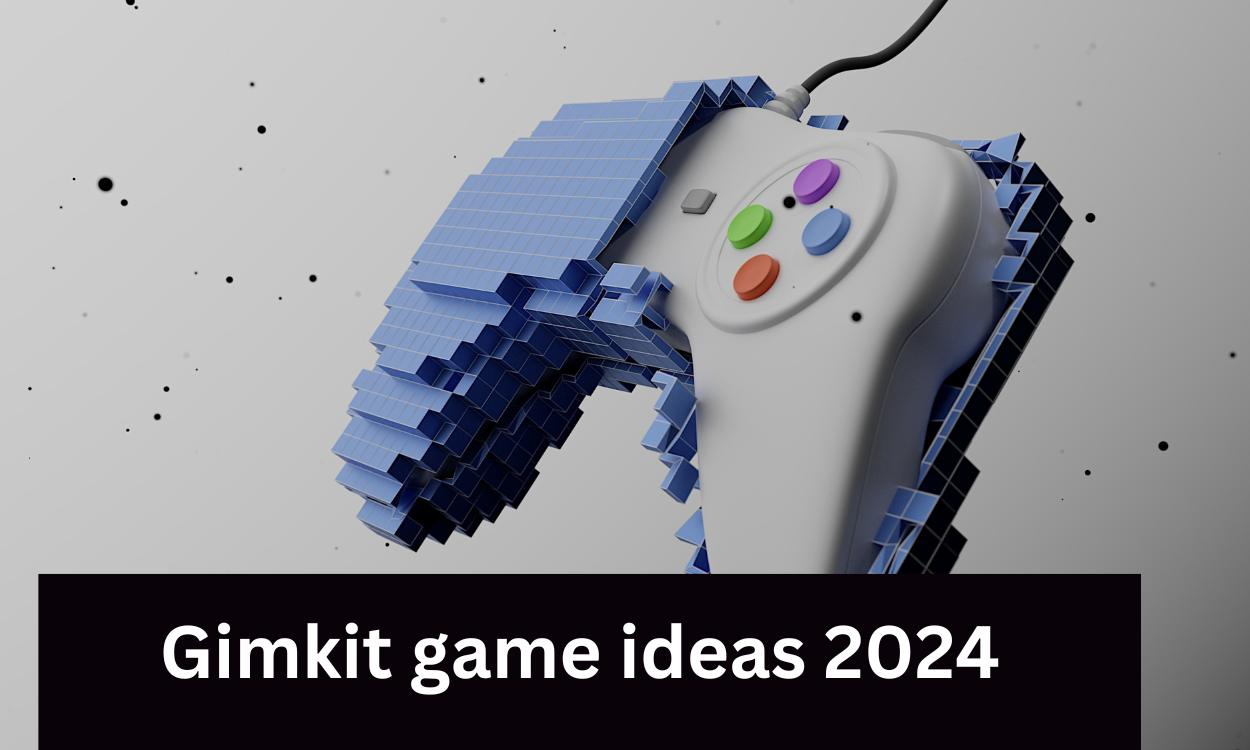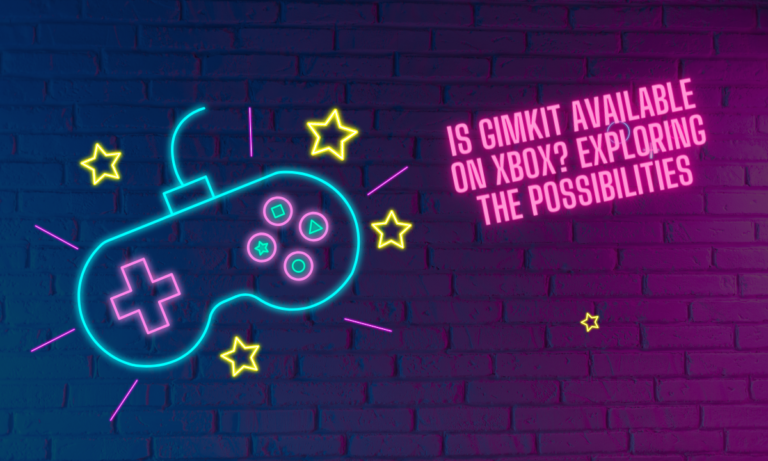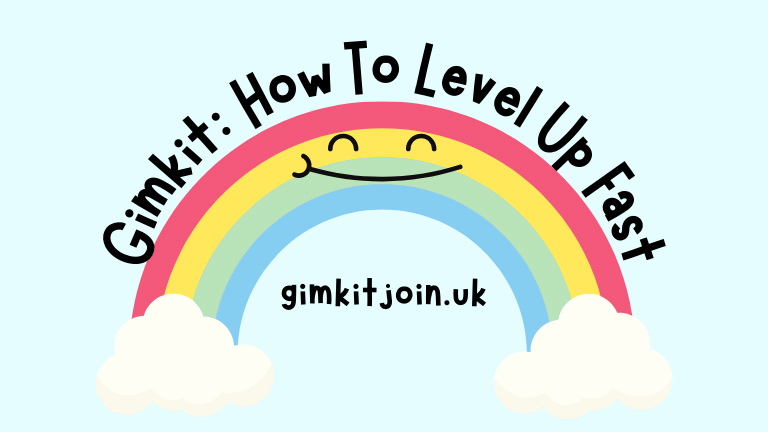Gimkit Game Ideas [2024]
Gimkit has emerged as a groundbreaking platform for educational gamification, turning traditional learning into an interactive and enjoyable experience. At the heart of its appeal is the ability to create custom games that cater to diverse educational needs and preferences. In this extensive guide, we explore a multitude of Gimkit game ideas designed to enhance learning, foster engagement, and make studying more dynamic. Whether you’re an educator, student, or educational game designer, these ideas will inspire you to harness the full potential of the Gimkit platform.
Understanding Gimkit Game Mechanics
Overview of Gimkit
Gimkit is an educational platform that allows users to create interactive quizzes and games for learning purposes. Key features include:
- Customizable Quizzes: Create and modify quizzes to align with specific learning objectives.
- Real-Time Gameplay: Engage participants in real-time, adding a competitive edge to the learning process.
- Virtual Currency: Earn and spend virtual currency to enhance the game experience.
- Analytics and Reporting: Track performance and engagement through detailed reports.
Key Game Mechanics
Understanding Gimkit’s game mechanics is essential for creating effective game ideas:
- Question Types: Utilize multiple-choice, true/false, fill-in-the-blank, and other question formats.
- Power-Ups: Incorporate special abilities that provide advantages during gameplay.
- Game Modes: Use different game modes to vary the competitive elements and gameplay experience.
Innovative Gimkit Game Ideas
1. Trivia Showdown
Concept
A fast-paced trivia game where players answer questions from various categories to earn points. The player with the highest score at the end wins.
Implementation
- Categories: Include categories like Science, History, Pop Culture, and more.
- Question Types: Use multiple-choice and true/false questions for a diverse quiz experience.
- Time Limits: Set a time limit for answering each question to keep the game engaging.
Benefits
- Engagement: Keeps players engaged through a competitive and dynamic format.
- Knowledge Reinforcement: Reinforces learning through repetitive questioning and immediate feedback.
2. Escape Room Challenge
Concept
Create a virtual escape room where players solve a series of puzzles and answer questions to “escape” from different rooms or scenarios.
Implementation
- Themes: Design themed rooms such as Ancient Egypt, Space Station, or Haunted House.
- Puzzles: Incorporate riddles and complex questions that players need to solve to advance.
- Timer: Use a countdown timer to add urgency and excitement.
Benefits
- Critical Thinking: Encourages problem-solving and critical thinking skills.
- Teamwork: Promote collaboration by allowing players to work in teams.
3. Jeopardy!-Style Quiz
Concept
Replicate the classic Jeopardy! game show format with categories and clues. Players select clues and answer in the form of questions to earn points.
Implementation
- Categories: Create categories relevant to your subject matter.
- Clues: Design clues that vary in difficulty and point value.
- Daily Double: Include a “Daily Double” feature where players can wager points.
Benefits
- Variety: Offers a variety of questions and topics to maintain interest.
- Competitive Fun: Adds a competitive element with the chance to wager points.
4. Time Travel Adventure
Concept
Take players on a time travel adventure where they answer questions related to different historical periods or future scenarios.
Implementation
- Historical Periods: Include periods such as the Renaissance, the Industrial Revolution, and Ancient Greece.
- Future Scenarios: Add futuristic scenarios to explore concepts like technology advancements.
- Interactive Elements: Use multimedia elements such as images and videos to enhance the experience.
Benefits
- Historical Knowledge: Provides context and understanding of different historical periods.
- Imaginative Learning: Stimulates creativity and imagination by exploring future possibilities.
5. Language Learning Game
Concept
Develop a game focused on language learning, including vocabulary, grammar, and sentence structure exercises.
Implementation
- Vocabulary Challenges: Create multiple-choice and fill-in-the-blank questions for vocabulary practice.
- Grammar Puzzles: Design questions that focus on grammar rules and sentence construction.
- Pronunciation Practice: Integrate audio clips for pronunciation practice.
Benefits
- Language Skills: Enhances vocabulary and grammar skills through interactive practice.
- Cultural Context: Introduce cultural elements to provide context and enhance learning.
6. Science Lab Simulation
Concept
Simulate a virtual science lab where players conduct experiments and answer questions related to scientific principles and processes.
Implementation
- Experiments: Design experiments that involve mixing chemicals, observing reactions, and analyzing results.
- Lab Equipment: Include questions about lab equipment and their uses.
- Safety Protocols: Integrate questions about safety procedures and best practices.
Benefits
- Practical Knowledge: Provides hands-on experience with scientific concepts.
- Interactive Learning: Engages students with virtual experiments and simulations.
7. Math Marathon
Concept
A math-focused game where players solve a series of math problems to advance through different levels and earn rewards.
Implementation
- Problem Types: Include addition, subtraction, multiplication, division, and more advanced topics.
- Levels: Create different levels of difficulty to cater to various skill levels.
- Rewards: Use virtual currency or points as rewards for correct answers.
Benefits
- Math Skills: Reinforces mathematical concepts and problem-solving skills.
- Progress Tracking: Allows for tracking progress and improvement over time.
8. Geography Quest
Concept
A geography-based game where players answer questions about countries, capitals, landmarks, and geographical features to progress through the game.
Implementation
- Geographical Features: Include questions about rivers, mountains, and other geographical features.
- Countries and Capitals: Test knowledge of countries and their capitals.
- Landmark Recognition: Include questions about famous landmarks and their locations.
Benefits
- Geographical Knowledge: Enhances understanding of global geography.
- Visual Learning: Use maps and images to support learning and retention.
9. Literary Analysis Challenge
Concept
Create a game focused on literary analysis, where players answer questions about literary devices, themes, and character analysis from various texts.
Implementation
- Literary Devices: Include questions about metaphors, similes, and other literary devices.
- Themes and Characters: Design questions related to themes and character development in different texts.
- Passages: Use excerpts from literature for analysis and questions.
Benefits
- Analytical Skills: Develops skills in literary analysis and critical thinking.
- Textual Understanding: Enhances comprehension of literary texts and concepts.
10. Art and Culture Quiz
Concept
Design a game centered around art and culture, including questions about famous artists, art movements, and cultural traditions.
Implementation
- Artists and Movements: Include questions about renowned artists and different art movements.
- Cultural Traditions: Test knowledge of various cultural traditions and practices.
- Visual Aids: Use images of artworks and cultural artifacts to enhance the game.
Benefits
- Cultural Awareness: Increases awareness and appreciation of art and cultural traditions.
- Visual Learning: Engages players with visual elements and multimedia content.
Tips for Designing Effective Gimkit Games
Understanding Your Audience
Tailor your games to the needs and preferences of your audience:
- Age Group: Consider the age and educational level of your players.
- Interests: Incorporate topics and themes that resonate with your audience.
- Learning Goals: Align your game with specific learning objectives and goals.
Balancing Difficulty Levels
Ensure your game is challenging but not overwhelming:
- Progressive Difficulty: Include questions of varying difficulty to cater to different skill levels.
- Hints and Tips: Provide hints or additional resources to support players who may struggle.
Incorporating Multimedia
Enhance your game with multimedia elements:
- Images and Videos: Use visual and audio aids to make questions more engaging.
- Interactive Features: Incorporate interactive elements such as clickable maps or diagrams.
Providing Immediate Feedback
Offer real-time feedback to enhance learning:
- Correct Answers: Provide explanations for correct answers to reinforce learning.
- Incorrect Answers: Offer hints or additional information for incorrect responses.
Keeping the Game Engaging
Maintain player interest with engaging features:
- Rewards and Incentives: Use virtual currency, badges, or points as rewards for correct answers.
- Competitive Elements: Include leaderboards or timed challenges to add excitement.
Successful Implementations and Case Studies
Case Study 1: High School History Class
A high school history teacher used Gimkit to create a trivia showdown focused on historical events:
- Categories: Included Ancient Civilizations, World Wars, and Modern History.
- Results: Increased student engagement and improved retention of historical facts.
Case Study 2: College-Level Biology Course
A college professor implemented a science lab simulation game to teach biology concepts:
- Experiments: Designed virtual experiments related to cellular biology and genetics.
- Outcomes: Enhanced understanding of complex biological processes and improved student performance.
Case Study 3: Language Learning in Elementary School
An elementary school teacher used a language learning game to teach vocabulary and grammar:
- Challenges: Created vocabulary challenges and grammar puzzles to reinforce language skills.
- Impact: Increased student participation and language proficiency.
Troubleshooting Common Issues
Technical Problems
Connectivity Issues
If players experience connectivity issues:
- Check Internet Connection: Ensure a stable internet connection.
- Browser Compatibility: Use compatible and updated browsers.
Performance Issues
For performance-related problems:
- Clear Cache: Regularly clear browser cache to improve performance.
- Update Software: Ensure that all software is up-to-date.
Content-Related Challenges
Question Accuracy
To address issues with question accuracy:
- Review Content: Regularly review and test questions for accuracy and relevance.
- Seek Feedback: Gather feedback from players to identify and correct issues.
Difficulty Levels
If players find the game too easy or too difficult:
- Adjust Difficulty: Modify the difficulty settings to better match the audience’s skill level.
- Provide Support: Include hints or additional resources to assist players.
Future Trends and Developments
Emerging Technologies
Stay updated with emerging technologies that can enhance Gimkit games:
- Artificial Intelligence: AI-driven personalization and adaptive learning features.
- Augmented Reality: Integration of AR elements for immersive learning experiences.
- Gamification Innovations: New game mechanics and features to enhance engagement.
Expanding Educational Applications
Explore new educational applications for Gimkit:
- Cross-Disciplinary Games: Develop games that integrate multiple subjects or disciplines.
- Global Collaboration: Use Gimkit for collaborative projects and international learning experiences.
Conclusion
Gimkit offers a wealth of opportunities for creating engaging and educational games. By exploring these innovative game ideas and applying best practices in game design, educators, students, and game creators can transform learning into an interactive and enjoyable experience. Embrace the creativity and flexibility of Gimkit to develop games that not only entertain but also educate and inspire.
FAQs
What is Gimkit?
Gimkit is an educational platform that allows users to create and play interactive quizzes and games. It incorporates elements of gamification to enhance learning and engagement.
How can I create a game using Gimkit?
To create a game, sign up for a Gimkit account, access the Game Maker feature, and use the available tools to design and customize your game with questions, themes, and settings.
What types of questions can I include in my Gimkit games?
Gimkit supports various question types, including multiple-choice, true/false, fill-in-the-blank, and more. You can customize these questions to fit your educational objectives.
How can I make my Gimkit game more engaging?
Incorporate multimedia elements, provide immediate feedback, use rewards and incentives, and include competitive features to keep players engaged and motivated.
What are some future trends for Gimkit?
Future trends may include advancements in AI, integration with augmented reality, and new gamification innovations to enhance the learning experience.






